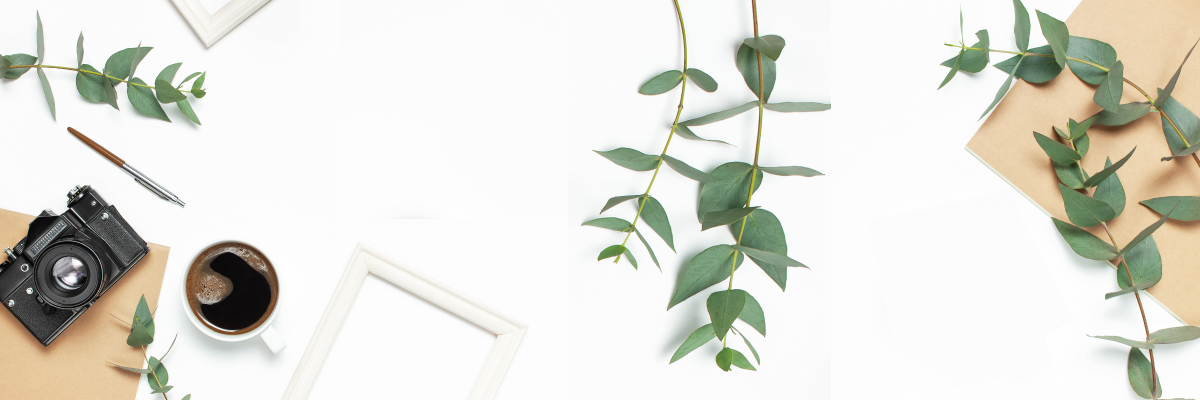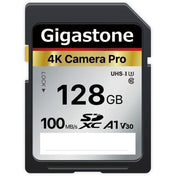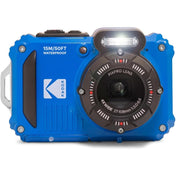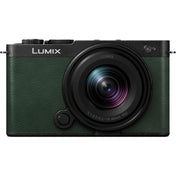Overview
Photography has evolved from the 19th-century daguerreotype to modern digital and smartphone cameras. Key developments include the introduction of film by George Eastman, the rise of digital photography, and the impact of social media. Today's advancements, such as AI and VR, are shaping the future of photography, making it more accessible and creative than ever. Every photograph captures a story, reflecting the art's rich evolution.
The art of photography has undergone a significant transformation since its inception. From the early days of film cameras to today’s advanced technology like the waterproof digital camera, the journey has been nothing short of remarkable. This blog post will explore the evolution of photography and how it has reshaped our understanding, techniques, and accessibility, providing an engaging look at how images captured on various mediums tell our stories.
The Birth of Photography: A Look Back in Time
It all began in the 19th century with the invention of the daguerreotype, the first practical process for capturing images. This innovative technique not only opened doors for artists and scientists but also laid the groundwork for the photographic journey that would follow. Here, we can break down the early days of photography into a few key developments:
The Daguerreotype
Introduced in 1839 by Louis Daguerre, the daguerreotype involved a complex process of exposing a treated metal plate to light. The resulting image was sharp and detailed, representing a major leap forward in image creation. However, this process required long exposure times, making it impractical for many everyday situations.
The Introduction of Film
In the late 1800s, George Eastman revolutionized photography with the introduction of flexible film. This significant advancement made it easier and more convenient for people to capture moments without the cumbersome equipment of earlier times. The Kodak camera, which Eastman manufactured, was marketed with the slogan “You press the button, we do the rest.” This democratized photography, allowing amateurs and professionals alike to engage with the art form easily.
The Rise of Film Photography
With the introduction of film, various formats emerged, from 35mm film to medium format options that offered different qualities and aesthetics for photographers. Film photography dominated the industry for decades and gave rise to iconic photographers who shaped visual storytelling.
Exploring Different Film Types
Photographers had a variety of film types at their disposal:
- Black and White Film: Renowned for its timeless aesthetic, black and white film played a significant role in capturing raw emotions and dramatic scenes.
- Color Film: Color film opened up new opportunities for vibrant storytelling, allowing photographers to portray scenes in stunning hues.
- Slide Film: Used primarily in professional settings, slide film presented a unique way to capture images that were rich in detail and color, often used for presentations and exhibitions.
The Darkroom Experience
The darkroom was an essential part of film photography, where photographers developed and printed their images. This labor-intensive process included several steps, such as developing the film, making prints, and experimenting with various techniques to achieve desired effects. While it provided an intimate connection between the photographer and their work, it also introduced constraints regarding time and access to resources.
The Digital Revolution: A Game Changer
As technology progressed, the advent of digital photography began to take center stage in the late 20th century. Digital cameras marked a significant departure from the film era, offering unprecedented access and convenience for both budding photographers and seasoned professionals.
The Birth of Digital Cameras
The first digital cameras emerged in the 1980s, although the quality of images was limited compared to film. However, as technology advanced, so did the quality of digital cameras, leading to widespread industry adoption by the 2000s.
Benefits of Digital Photography
Digital photography transformed the way we capture and share images. Here are some benefits that helped seal its victory over film:
- Instant Gratification: With digital cameras, photographers can instantly review their images and make necessary adjustments on the spot.
- Cost-Efficiency: Unlike film, which must be purchased and developed, digital photography allows unlimited shooting without worrying about the expense of materials.
- Editing Flexibility: Digital files can be easily edited with software, giving photographers more creative control over their final images.
- Accessibility: With the rise of smartphone cameras, photography has become accessible to everyone, enabling more images to be captured and shared globally.
From Film to Digital: The Transition
The transition from film to digital was not immediate. There was resistance from traditionalists who cherished the nuances of film. However, the digital format proved to be revolutionary, eventually rendering film largely obsolete in everyday photography.
The Emergence of Professional Digital Cameras
As professional photographers recognized the benefits of digital photography, many transitioned to DSLR (digital single-lens reflex) cameras. These cameras brought together the functionalities of traditional cameras while adding digital features, allowing for higher resolution images and a range of lenses for diverse shooting formats.
Companies began to innovate rapidly, resulting in products that catered to various needs, from high-end professional equipment to compact models for enthusiasts. Eventually, even action cameras became more mainstream, and innovations like the waterproof digital camera catered to adventure seekers and landscape photographers.
The Growth of Smartphone Photography
With the integration of high-quality cameras in smartphones, photography exploded into mainstream culture. Every individual now has the ability to capture and share moments instantly, democratizing the art form. Social media platforms further fueled this trend, encouraging the sharing and appreciation of photography.
The Impact of Social Media on Photography
Platforms like Instagram and Pinterest have redefined the way images are consumed and created. Through these platforms, photographers, both experienced and novice, can share their work with a global audience, fostering communities and collaborations that celebrate visual storytelling.
The Future of Photography: Emerging Trends
As technology continues to evolve, so too does photography. Here are a few trends shaping the future of the photographic landscape:
Advancements in Camera Technology
Today’s cameras are equipped with advanced features, such as AI-powered autofocus and high-dynamic-range imaging. These innovations allow photographers to capture stunning images even in challenging light conditions. The waterproof digital camera, for example, has enabled many to take their photography underwater, expanding their creative horizons.
The Role of Artificial Intelligence
Artificial intelligence is making waves in photo editing, allowing fast and automated adjustments that once took hours to perfect. Whether it’s enhancing images or selecting the best shots, AI tools are becoming indispensable for photographers across the board.
Virtual and Augmented Reality
Virtual reality (VR) and augmented reality (AR) are providing unique avenues for storytelling through photography. Photographers can create immersive experiences that place viewers directly into the heart of a scene, adding depth to the visual narrative.
Every Photograph Tells a Story
Photography, in all its forms—from film to digital—has come a long way. It has evolved not just as a medium for capturing moments, but as a form of creative expression that speaks volumes about our world. Every snapshot holds a story waiting to be shared, and as technology advances, so too does our ability to tell these stories beautifully. Embrace the evolution of photography; whether you opt for a state-of-the-art digital camera or explore the artistic merits of film, there's no better time to start capturing your narrative!
Linked Product

Kodak PIXPRO WPZ2 Waterproof Digital Camera
The Kodak PIXPRO WPZ2 Waterproof Digital Camera is an ideal companion for outdoor enthusiasts looking to capture their adventures, whether on land or underwater. Its durable design, featuring shockproof and dustproof capabilities, makes it suitable for various environments, while the 1080P HD video functionality offers versatile recording options. This camera highlights the evolution of photography by merging traditional durability with modern digital technology, enabling users to document their experiences across different settings.
View Product











